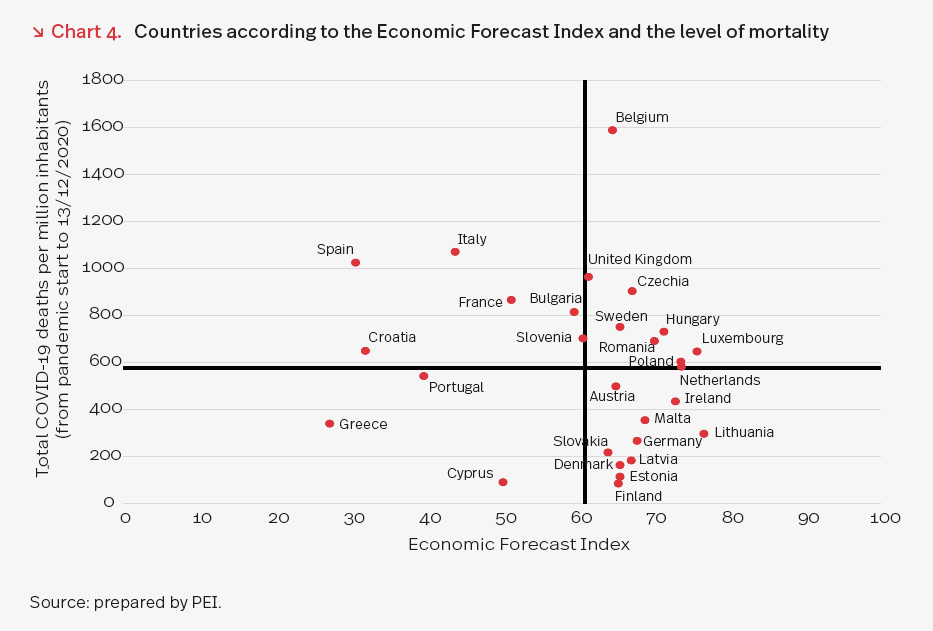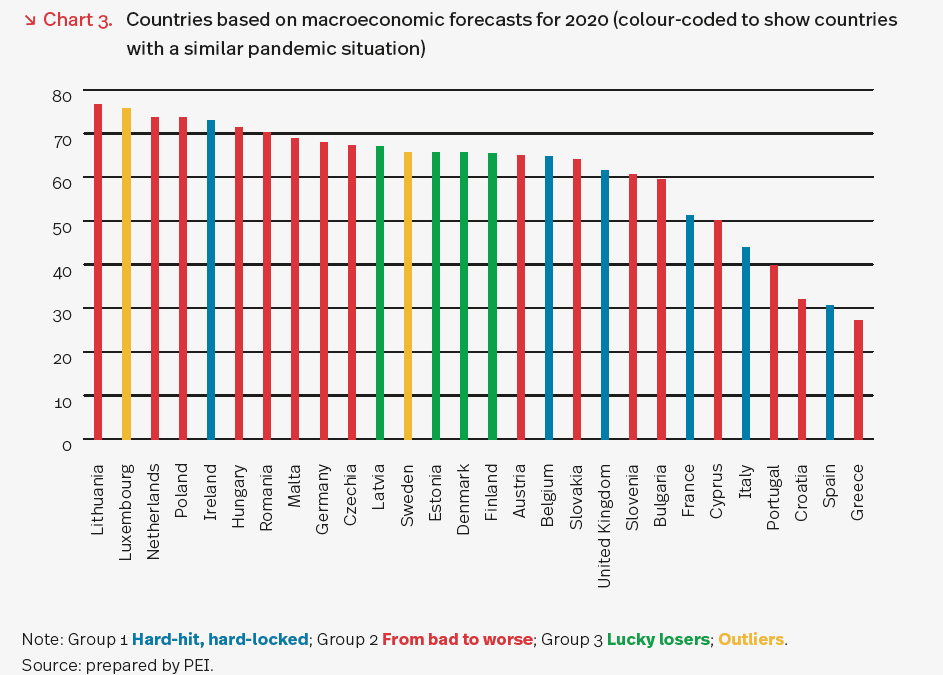A new index measuring economic prospects amid the coronavirus pandemic finds Poland to be the country with the fourth best forecast among 28 European states. Only Lithuania, Luxembourg and the Netherlands fare better, taking the top three spots respectively.
The Economic Forecast Index (EFI) – published today by the Polish Economic Institute (PIE), a state-run think tank – combines forecasts for GDP growth, unemployment rate, government deficit and gross public debt, as well as imports and exports. The data is based on European Commission forecasts.
In its autumn forecast, the commission predicted that Poland’s real GDP would contract by 3.6% in 2020. That was the fourth lowest drop in the European Union, and well below the bloc’s average of -7.4%. Poland’s unemployment rate is also among the EU’s lowest.
Poland is, however, forecast to have the EU’s highest inflation in each of 2020, 2021 and 2022. But PIE excludes this variable from its methodology, noting that it could “interfere” with the final ranking due to “countries with the highest deflation receiving the highest score for this variable”.
According to PIE’s index, just before the pandemic hit Poland ranked second in Europe in terms of economic prospects, behind only Romania.
A year later, when the economic impact of the pandemic had been accounted for in forecasts, Poland dropped to fourth place. The report finds that Greece, Spain and Croatia have the worst prospects.
PIE notes that, in response to the pandemic, Poland introduced fiscal packages during the first wave reaching 5.2% of GDP – more than the neighbouring Czech Republic (4.9%) but less than France (6%), Germany (8.9%), Italy (6.7%) and the UK (9%). Poland, however, also introduced liquidity programmes at 4.5% of GDP.
The report also clusters countries by their economic forecast scores and Covid mortality levels from the start of the pandemic until mid-December.
Here, PIE classifies Poland as being among the countries that rank high on both counts, alongside Belgium, the Czech Republic, Hungary, Luxembourg, the Netherlands, Romania, Slovenia, Sweden and the UK.

As for future prospects, the report forecasts Poland’s GDP growth of 4.2% in 2021 under a “realistic scenario” that assumes the pandemic subsides by the second half of the year but that, given bottlenecks in vaccination delivery, some restrictions on businesses remain until autumn 2021.
According to the European Commission’s autumn forecasts, Poland is set for GDP growth of 3.3% in 2021.

Maria Wilczek is deputy editor of Notes from Poland. She is a regular writer for The Times, The Economist and Al Jazeera English, and has also featured in Foreign Policy, Politico Europe, The Spectator and Gazeta Wyborcza.




















